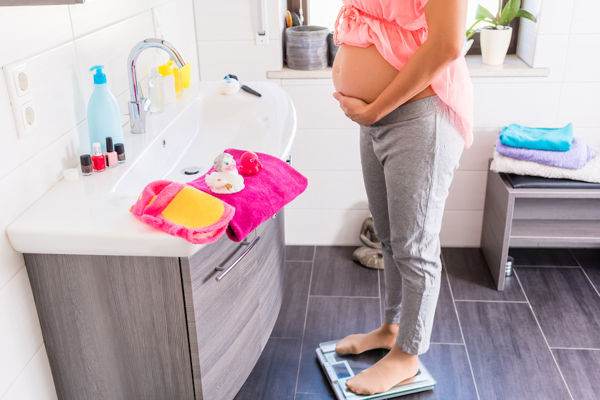
Why are there more twins around these days?
October 13, 2006

- Related Topics:
- Weight,
- Environmental influence,
- Reproduction,
- Twins
A curious adult from California asks:
"It seems to me that there are a lot more twins around these days. Is this true? Do scientists know why this is?"
You're right, there are more twins around compared to a few years back. How many more?
Lots more. According to the CDC, the rate of twinning went up 65% from 1980 to 2002.1 This is an increase from 19 to 31 twins per thousand babies.
You probably haven't noticed more identical twins than there were before though. That's because the number of identical twins has stayed pretty constant over the years. What is becoming more common are fraternal twins.
Fraternal twins happen when a mom releases two eggs during a cycle. Each egg is then fertilized by a different sperm. Identical twins happen when a single fertilized egg splits into two. We know that fraternal twins can run in families. So is this increase in the number of fraternal twins due to genetics?
Almost certainly not. The increase we've seen in the past 25 years is too rapid to be explained by genetics. Unless something catastrophic happened.
For example, imagine a virus that wiped out all women who were unlikely to have twins. Then you might end up with an increased twinning rate in a very short time.
But nothing like this has happened. So there needs to be another explanation besides genes. Which leaves the environment.

Fertility treatments and twins
So what is different between now and 1980? One big difference is that more women are having fertility treatments done nowadays. Another is that women are having babies later. Both of these changes lead to more twins.
Fertility treatments can lead to more twins in a couple of different ways. Some treatments increase the chances for a successful pregnancy by placing many fertilized embryos in the womb. This certainly leads to more twins (and triplets, etc).
Other treatments give the mother a hormone called FSH that causes eggs to be released from the ovaries. In this treatment, FSH often causes more than one egg to be released, which leads to more twins.
FSH is probably the reason older moms have more babies too. And why twinning can sometimes run in families.
As a woman gets older, her FSH levels increase. And the genes that make it more likely a woman will have twins probably cause increased FSH levels as well.
So FSH is responsible for much of the twinning we see. But many researchers don't think this is enough to explain all of the increase seen in the last 25 years or so.
Obesity and twins
What else has changed since 1980? Well, we've become larger. Obesity rates have skyrocketed in the last 25 years for American men, women, and children.
If we look at women between the ages of 20 and 39, the increase in obesity is startling. In the period from 1976-1980, around 12.3% of women were obese. In the period from 1999-2000, 28.4% of women were obese.2 And the obesity rate has continued to climb since then.
Is there a connection between obesity and twinning? Yes.
A number of studies done both here in the U.S. and abroad have shown a link. One particularly compelling study looked at births in the U.S. from 1959 to 1966. This is from a time when women were conceiving earlier and before fertility treatments.
The results showed when a woman weighed more, her chances for twins increased.3 For example, women who were neither overweight nor obese had a 4 in 1000 chance for having fraternal twins. Obese women had an 11 in 1000 chance.
As we might expect, weight had no effect on the rates of identical twins. These rates stayed at 4 per 1000 no matter the weight of the mother.

So many of those extra twins you have been seeing may have happened because of the obesity epidemic. Do we know why obese women have twins more frequently? Not really.
We know that it probably isn't the FSH we talked about earlier. Obese women tend to have normal levels of this hormone. It’s possible that obese women are better able to carry twins to term.
Many pregnancies that start out with twins end up with only one twin surviving to birth. This is common enough that it even has a name, the Vanishing Twin Phenomenon.4 Some researchers put the number of pregnancies that start out with twins as high as 10%.
How could we test whether larger women have more twins because they can carry them more successfully? One way would be to compare obese and non-obese women at the beginning and end of pregnancy.
Did more obese women start out with twins? Or do all women start out with the same number of twin pregnancies but obese women give birth to more twins? The answers would give us some clues about why obese women have more twins.
Whatever the reason, you're right that there are more twins these days. At least part of the explanation has to do with how we live and the age we conceive. Scientists will keep working to see if there are other explanations as well.

Author: Dr. D. Barry Starr
Barry served as The Tech Geneticist from 2002-2018. He founded Ask-a-Geneticist, answered thousands of questions submitted by people from all around the world, and oversaw and edited all articles published during his tenure. AAG is part of the Stanford at The Tech program, which brings Stanford scientists to The Tech to answer questions for this site, as well as to run science activities with visitors at The Tech Interactive in downtown San Jose.
 Skip Navigation
Skip Navigation
